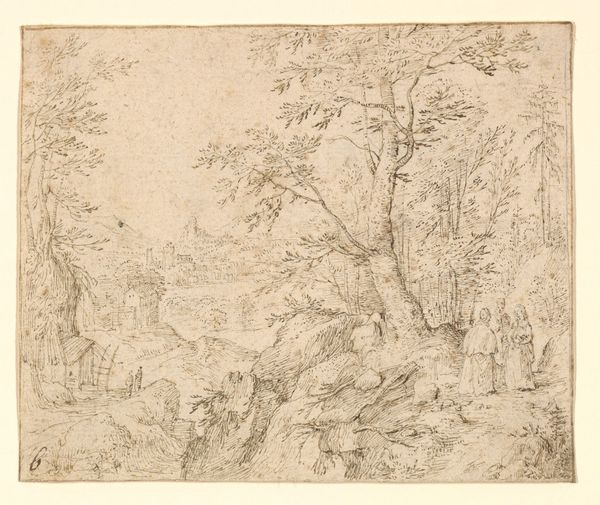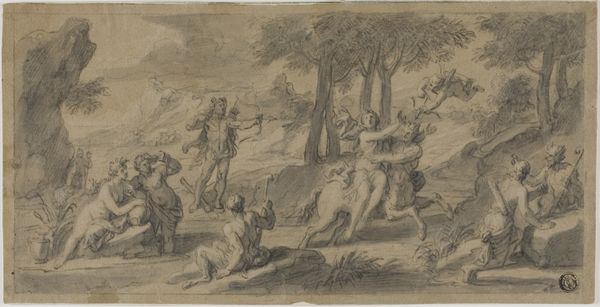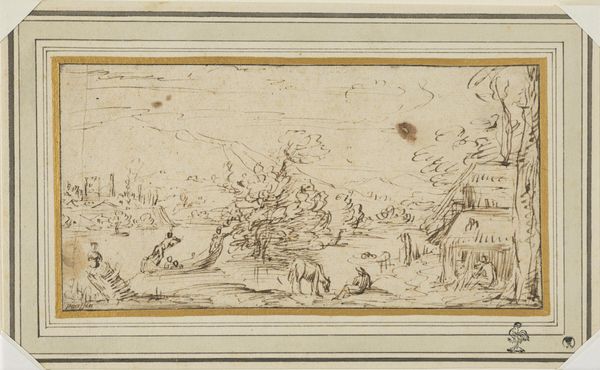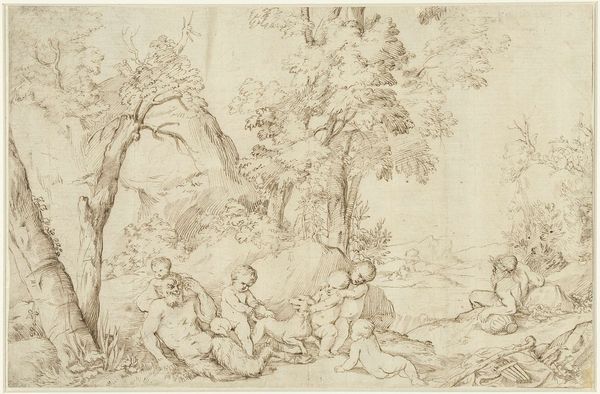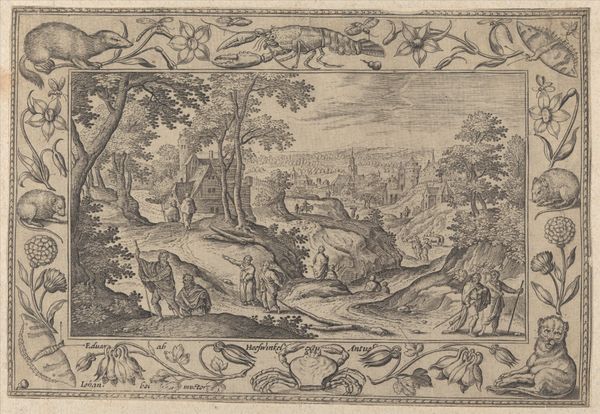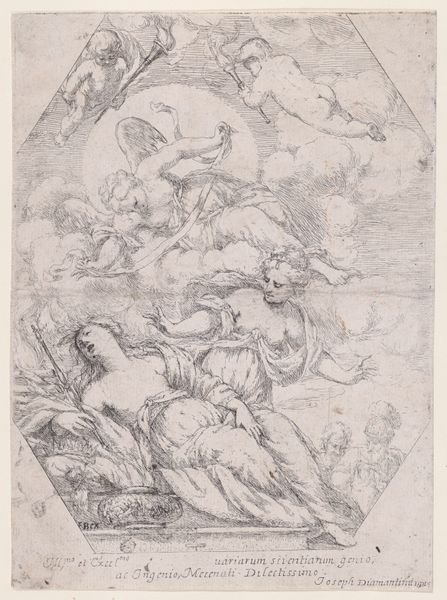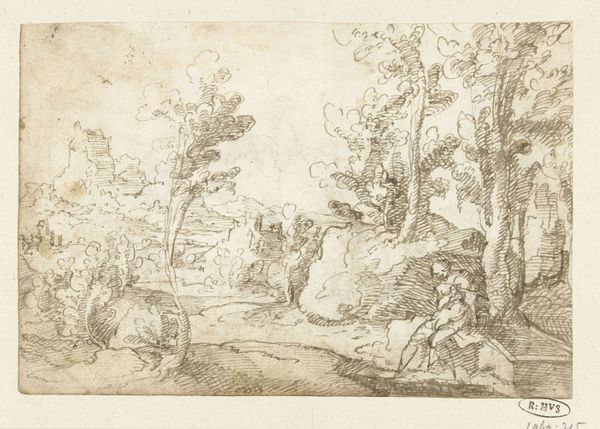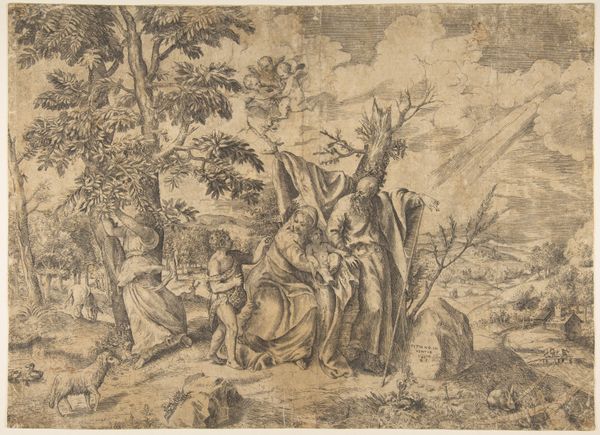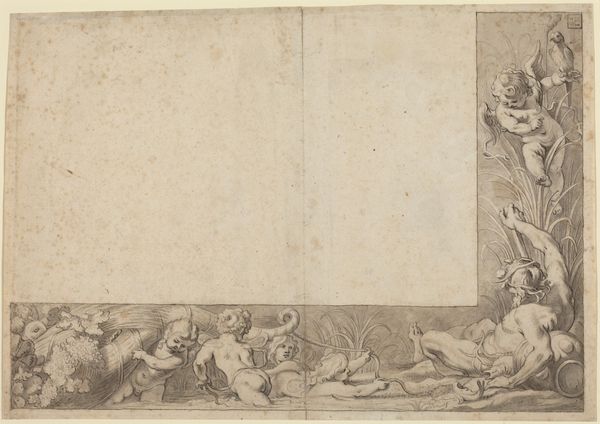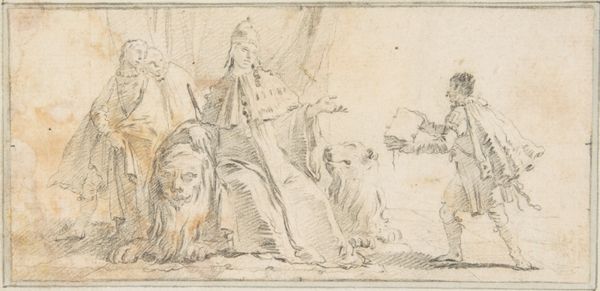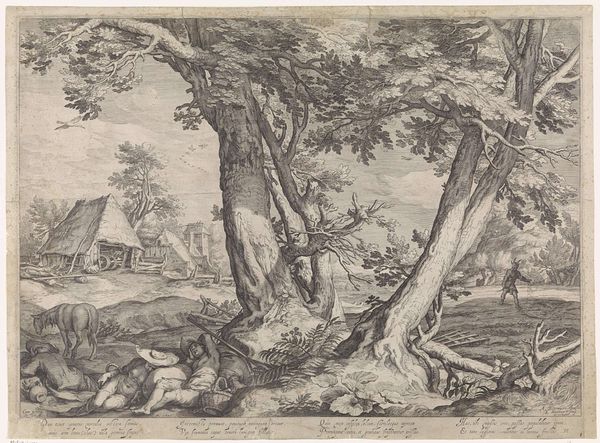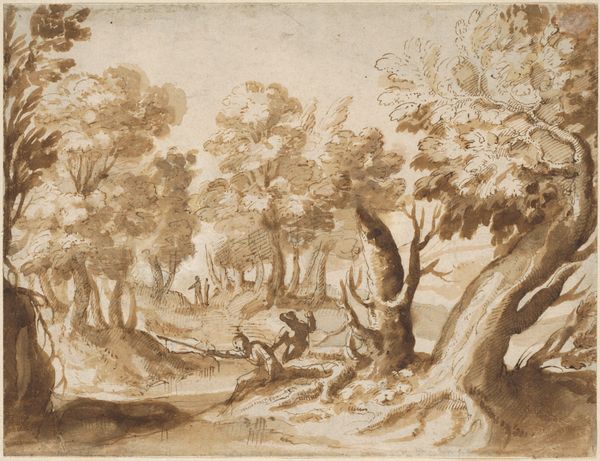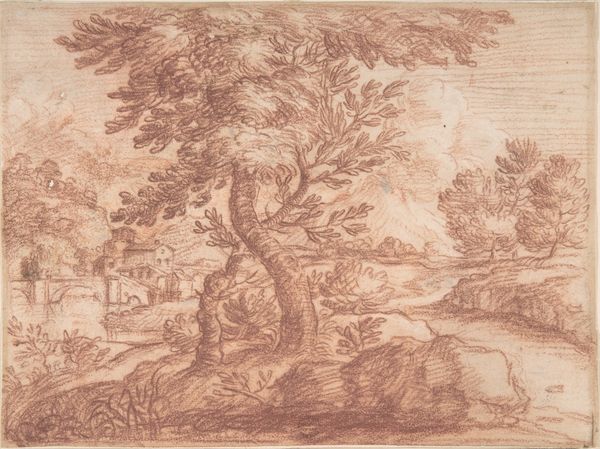
drawing, ink, pencil
#
drawing
#
baroque
#
ink painting
#
pencil sketch
#
landscape
#
etching
#
figuration
#
ink
#
pencil
#
watercolour illustration
Dimensions: height 175 mm, width 212 mm
Copyright: Rijks Museum: Open Domain
Curator: This drawing, “Rest on the Flight into Egypt,” attributed to Hendrik Uylenburgh, dates from roughly 1594 to 1660 and presents a serene moment rendered in ink and pencil. The Baroque style blends landscape with figuration. Editor: It feels so light, ethereal, almost sketched from a dream. The ink wash is delicate, making the scene look transient, a fleeting respite. Curator: Yes, the loose rendering belies its careful composition. Consider the social and political upheavals of the Baroque period—the constant religious conflicts. A piece like this could function as a quiet affirmation of faith amidst that turmoil, picturing Mary, Joseph, and the infant Jesus during their flight to escape Herod's persecution. The iconography itself speaks volumes about survival and divine protection. Editor: And the very act of choosing pencil and ink… so readily available, almost democratic. This wasn’t a commissioned altarpiece dripping in expensive pigment; it’s a portable piece, potentially reproduced. Think about the availability of prints circulating at that time and the role these images would play for wider audiences. Curator: That accessibility absolutely shaped its reception and potential influence. Landscapes during this time weren't mere backgrounds; they became symbolic realms, reflections of the soul, but also assertions of power—think of cultivated gardens symbolizing control over nature. This seemingly peaceful scene, viewed within its historical context, could offer multiple layers of meaning to its original audience. Editor: Indeed. Focusing on materials and process gives a clearer picture of how artworks operated within culture at this time. For instance, was the paper locally sourced, what impact did that have, were cheaper materials being utilized that challenged traditions, allowing art production to evolve? Curator: Considering this landscape, this brief pause for the holy family to evade socio-political turbulence gives this piece a surprisingly immediate impact for today's viewers as well, doesn't it? Editor: Absolutely, analyzing this imagery gives me a more palpable understanding of faith and art-making in society during that period, moving me past surface appearance and deep into the Baroque world.
Comments
No comments
Be the first to comment and join the conversation on the ultimate creative platform.
